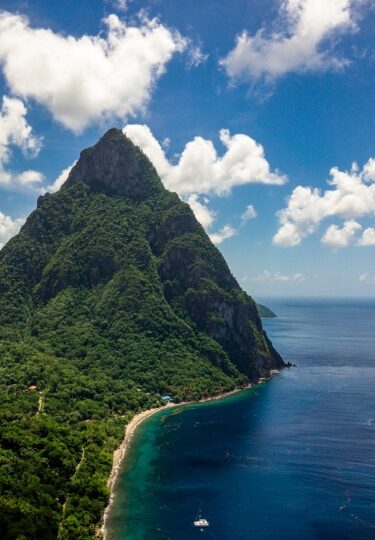With its tropical climate, the best time to visit St Lucia is in late fall and winter. From October through February, you avoid the more humid seasons of spring and summer.
One of the most popular Caribbean destinations, St. Lucia averages annual temperatures up to 83ºF (28°C). Even in January and February, the coolest months, you can expect temperatures of around 79°F (26°C).
This is perfect weather for enjoying the island’s beaches, hiking the lush interior, or dancing to the music of a “jump-up”. Year-round water temperatures in the low 80s are welcoming for divers, snorkelers, and swimmers.
Visiting St Lucia By Season
Summer
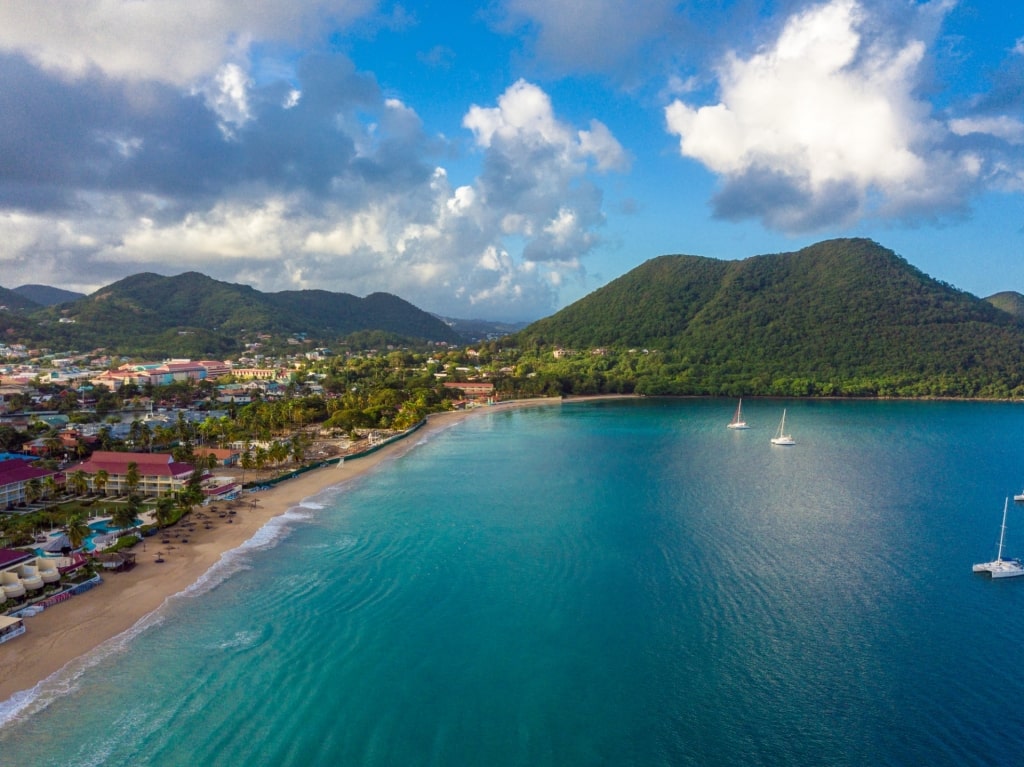
Reduit Beach
Summer in St. Lucia is hot and humid. In June, temperatures are already above 82ºF (27.7°C) but sea breezes help you feel cooler.
However, July through August sees the winds drop, and rainy days rise. The humidity builds, and both months can see significant rainfall.
St. Lucia Carnival in June and July fills the island with music. There are more than two weeks of partying, dancing, and food markets.
In August, when even water temperatures reach 84ºF (28.8°C), the pace of the island slows in the humidity. It is Chocolate Heritage Month, a good time to enjoy the shade of the island’s tree-filled cocoa plantations on a tour.
Fall
The Caribbean storm season peaks from August through October, the first part of fall. However, hurricanes are a rare event in St. Lucia, so it’s still one of the best islands to visit in October.
More common are tropical storms, but any thunderstorms can be exciting events when they light up the sky. They pass quickly, and anyone who enjoys the island’s rainforests, including the landmark Twin Pitons, will welcome the rains.
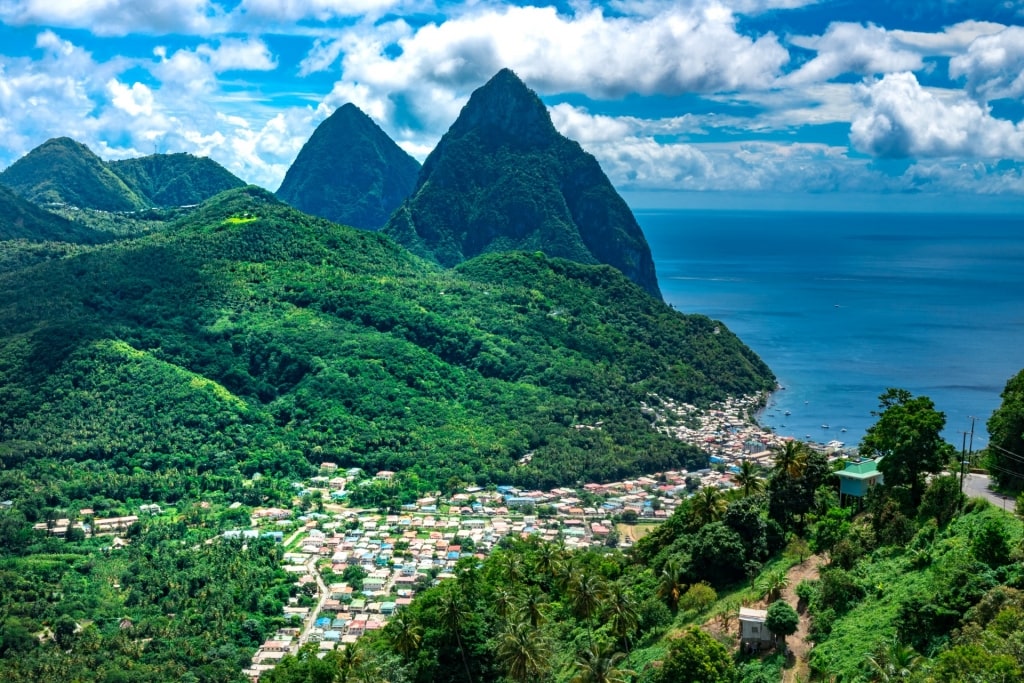
Twin Pitons
Fall is celebrated with the St. Lucia Dive Fest in mid-September, and La Marguerite Flower Festival in October. October is also Creole Heritage Month, the best time to experience St. Lucian cuisine, music, and dance.
Winter
December is the end of St. Lucia’s rainy season, although you can still expect an occasional light shower. January, and February will be even drier, but temperatures are still averaging 85ºF (29.4°C).
With very little rain, and ideal temperatures, this is the best time to go to St. Lucia. Eight hours of daylight allow you to enjoy the island’s attractions and still have energy for its nightlife.
This is the season to really enjoy some of the best things to do in St. Lucia, such as soaking in the Sulphur Springs of Soufrière, or a rainforest aerial tram. Scuba, snorkeling or plantation tours are also at their best.

Sulphur Springs of Soufrière
The average sea temperature in December is a pleasant 82ºF (27.7°C). The Festival of Light, St. Lucia National Day, on December 13, is celebrated for a week with lanterns, and fireworks.
Winter is also the best time to visit St. Lucia to see migrating humpback, pilot, and sperm whales, which come to the warmer Caribbean for mating season. It’s also a good time to see migrating birds joining the many indigenous species.
Read: Best Beaches in December to Visit
Spring
St. Lucia is still busy from March through April, until Spring Break in mid-April heralds the end of the peak season. May is the start of the rainy season, but tropical showers can still hit throughout the early spring months.
Any rain doesn’t stop mid-May’s St. Lucia Jazz & Arts Festival, held in Pigeon Island National Landmark, located near some of the best beaches in St. Lucia.
During March, and possibly April, you will see the last of the migrating whales. However, you can spot dolphins year-round off St. Lucia.
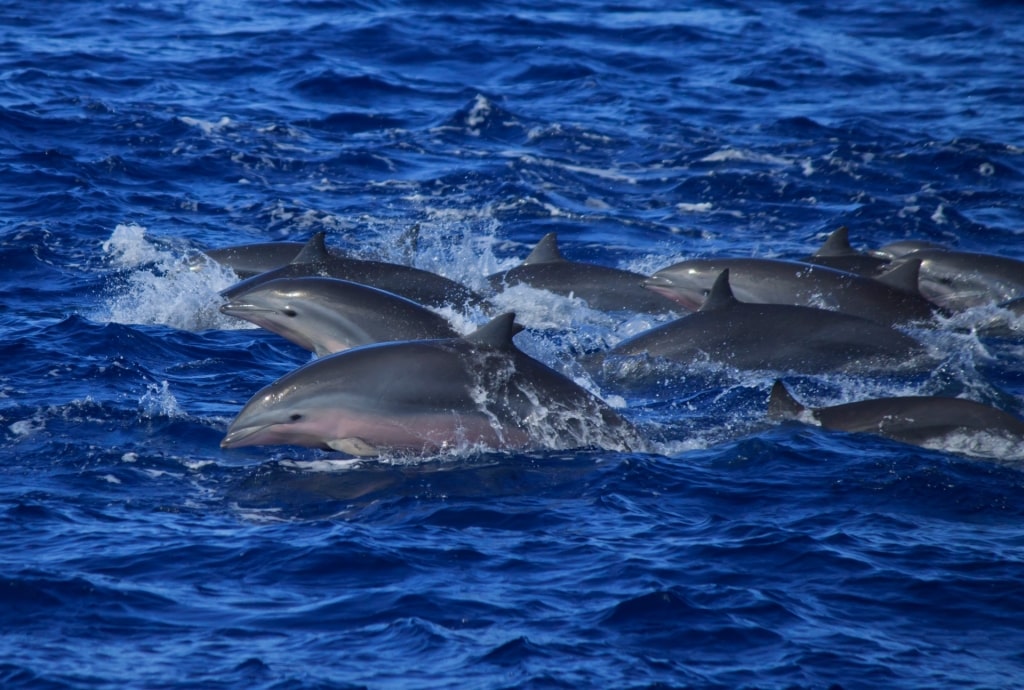
Dolphins
When Is Rainy Season?
The wettest months are September and October, which coincide with the height of the Caribbean storm season. However, major hurricanes are a rare event, although tropical storms will bring heavy rain.
Rain showers are heavy, but short, and might come a few afternoons per week. They are often a welcome relief from the high humidity.
When Is High Season?
The peak season for St Lucia is from mid-December through April, which is also the driest season.
Major sights such as the Diamond Botanical Gardens, Pigeon Island, Castries Central Market, and Sugar Beach are busy and the island has a happy buzz about it.
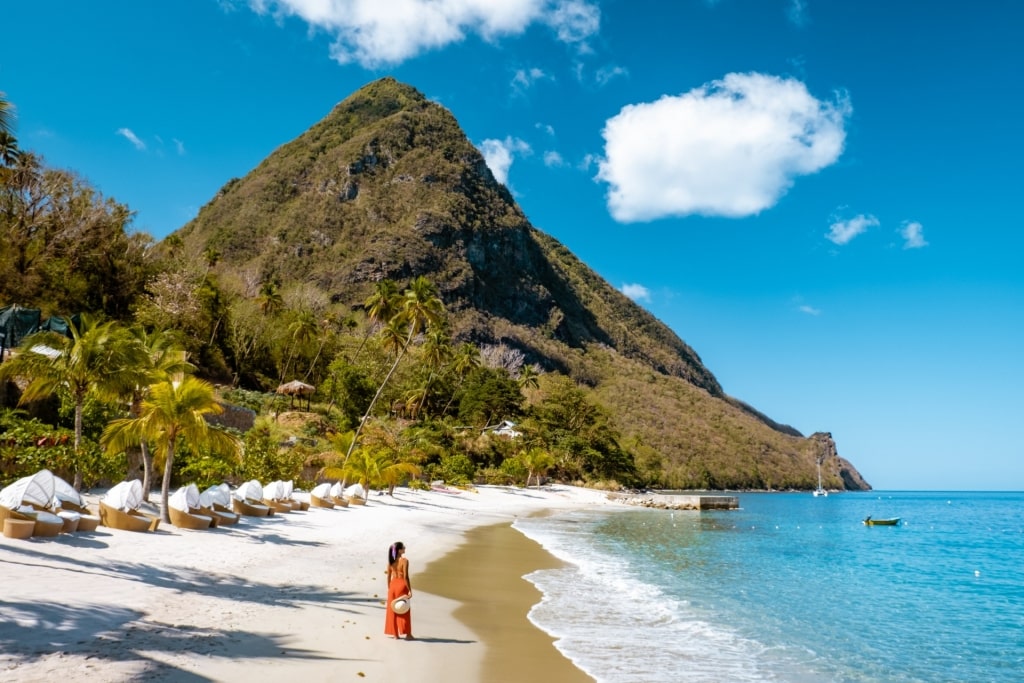
Sugar Beach
When Is Shoulder Season?
Shoulder season in St Lucia is from mid-April through early June. May is one of the driest months overall, but rain showers are becoming more frequent.
When Is Low Season?
Saint Lucia’s low season is during the rainy months of June through October. This is also the storm season, although bars, shops, and restaurants remain open.
Would you like to discover St Lucia’s tropical delights for yourself? Then browse our cruises to St. Lucia and find the perfect itinerary.
